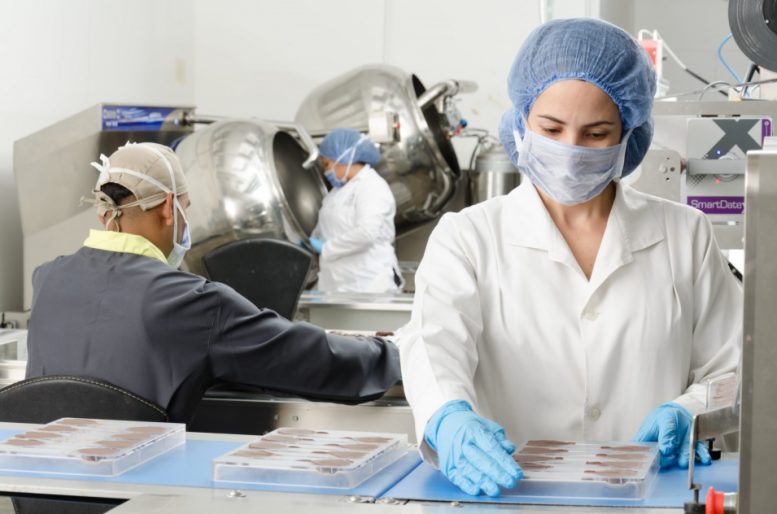Canada has the highest rate of health-associated infections (HAIs) in the developed world. Statistics from Public Health Canada show that more than 200,000 healthcare patients contract an HAI while receiving care every year, and as many as 8,000 Canadians die as a result. By 2050, HAIs could become the second-leading killer in Canada.
Most of these infections are preventable with proper prevention and control; however, many health and care facilities currently do not have enough resources to tackle the growing issue. This systemic problem is made worse by additional budget cuts and staff shortages causing teams to clean more square footage and stretch their materials to the limit.
Forward-thinking facility managers, administrators, and physicians can overcome their limited resources, adapt focus, and invest in innovative technologies to keep everyone clean, safe, and productive.
While not all are exclusively “new” technology, the following are some of the most influential technologies health and care facilities use to reduce the spread of infections.
Touch-free technology
Proper hand hygiene remains one of the most effective methods to avoid cross-contamination; however, people risk re-contamination by touching a faucet, soap pump, or forced air dryer after washing. Providing touch-free soap and sanitizer dispensers helps avoid re-contamination and automatically dispenses the appropriate amount of solution. Providing paper products in washrooms is also recommended.
To ensure hand hygiene compliance, healthcare facilities can choose to install monitoring systems that electronically track overall usage – not just staff. As a bonus, the software alerts you when the product is running low and can automatically request refills only when needed, saving money due to wasted resources and unnecessary labour hours. Taking the time to select washroom products carefully will have a massive impact on a facility’s overall safety and reputation.
Robot helpers
In 2022, one cannot speak about cleaning technologies without mentioning robots and autonomous equipment. Manual floor scrubbing and mopping are physically demanding tasks, and robotic cleaning equipment helps reduce employee strain and the risk of workplace injury. Automatic floor scrubbers, for example, are used to help staff become more efficient, automating tasks so they can focus on addressing targeted, high-risk surfaces faster. They foster consistency across different surfaces and accommodate different traffic levels.
There are energy and water savings, too, as machines are programmed to use the correct amount of solution and turn off once they have achieved the desired results. Autonomous scrubbers can come with real-time compliance tracking applications and heat mapping systems so facility managers and key stakeholders can see precisely the areas that have been cleaned.
Marking systems to zero in on pathogens
Historically, it has been challenging to measure cleaning effectiveness. While surfaces appear clean, many pathogens and germs are becoming more resistant, and existing cleaning protocols may no longer be sufficient. Many hospitals and care facilities use Adenosine Triphosphate (ATP) bioluminescence assay to assess the cleanliness of surfaces. ATP is present in all living cells and organic material, and the presence on surfaces suggests microbial or organic material. This validation technique helps employees to see the amount and exact locations of soil on surfaces that still need disinfecting.
New technology can generate visual images of contamination using a combination of Halo-imaging hardware, bio-tracking spray, and handheld tablet, which can be tracked and shared using management software. The real value of this information comes from the visual validation, training, and the creation of more efficient cleaning processes over time.
Software for strained teams
According to PIDAC (the Provincial Infectious Diseases Advisory Committee), increased cleaning time alone does not necessarily equate to more thorough cleaning. Standardizing training, proper cleaning techniques, and relevant product suggestions (including the correct dilutions) are vital in improving cleaning standards.
It is in the communication of the results where progress happens. When healthcare facilities have access to performance data, they can focus on areas of improvement, and managers can implement evidence-based proactive and preventative solutions. Mobile quality management software solutions give teams centralized visual assessments and validation so facilities can exceed monitoring compliance for infection-prevention policies. Software validation technology will add a little time to each room’s processing times; however, the effectiveness against infections makes it worthwhile.
Looking forward
Significant changes and reforms to combat grim infection statistics will yield results and empower facilities with information. Data-informed decisions allow health and care facilities to learn, convince, and adapt. (Even Florence Nightingale leveraged her data on hand hygiene for hospital administration to take note).
The insights from innovative cleaning technologies will bring exciting breakthroughs for healthcare facilities and set best practices for other industries. It will be familiar technology, just more evolved.
Ron Roopchansingh is VP of Sales and Marketing at Swish Maintenance, Canada’s source for quality cleaning supplies and equipment.








